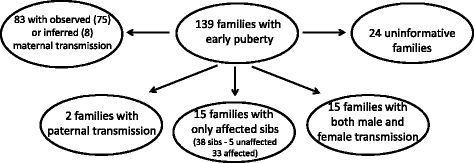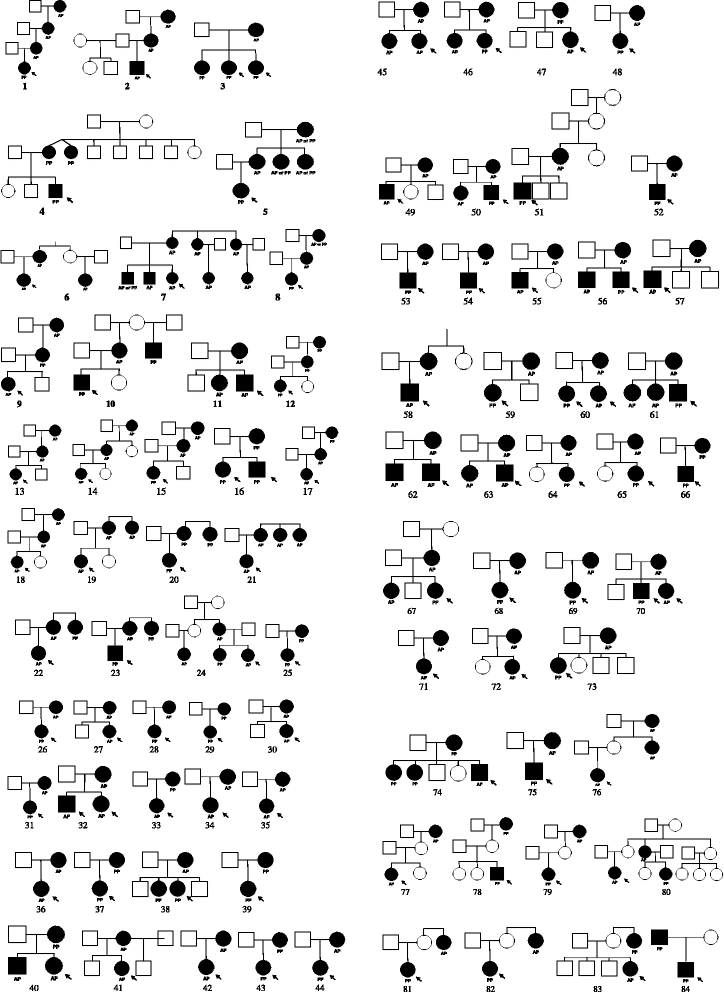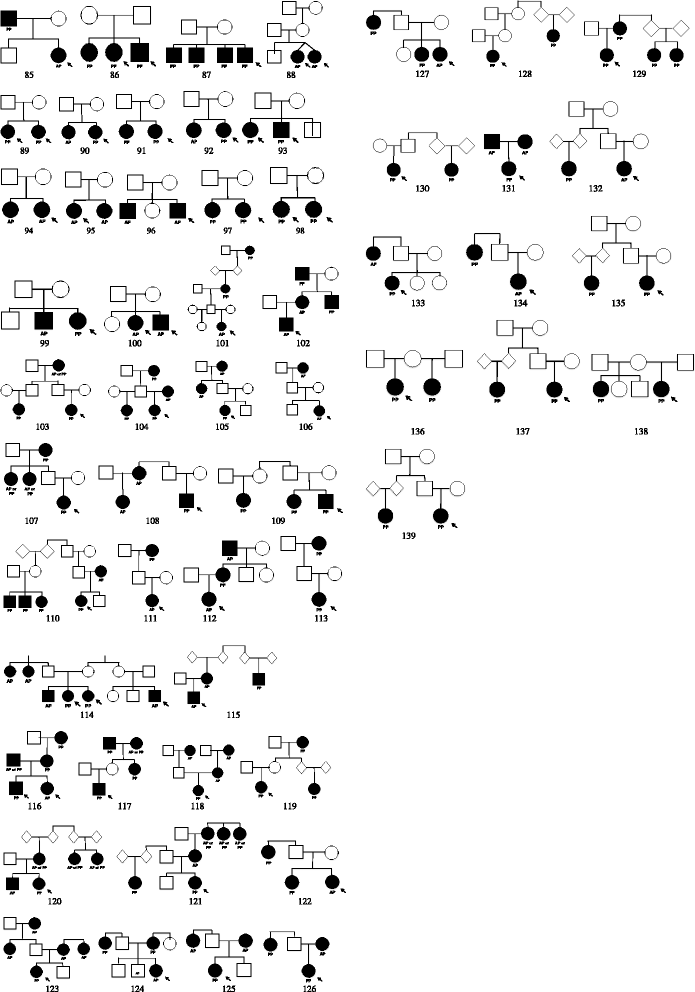Familial early puberty: presentation and inheritance pattern in 139 families
- PMID: 27624871
- PMCID: PMC5022170
- DOI: 10.1186/s12902-016-0130-x
Familial early puberty: presentation and inheritance pattern in 139 families
Abstract
Background: The mechanism that initiates the onset of puberty is largely unknown but the age of onset is mainly under genetic control and influenced by environmental factors including nutrition. The coexistence in the same family of central precocious puberty and advanced puberty, both representing early puberty, suggests that they may represent a clinical spectrum of the same trait due to early activation of the GnRH pulse generator. We therefore evaluated the mode of inheritance of early puberty in a large series of familial cases.
Methods: A retrospective, single center study was carried out on 154 probands (116 girls and 38 boys), from 139 families seen for idiopathic central precocious puberty (onset before 8 years in girls and 9-10 years in boys, n = 93) and/or advanced puberty (onset between 8 and 10 years in girls and 10 and 11 years in boys, n = 61) seen over a period of 8 years.
Results: Of the 139 families, 111 (80.4 %) had at least one affected 1st degree relatives, 17 (12 %) had only 2nd, 5 (3.6 %) only 3rd and 3 (2.2 %) had both 2nd and 3rd degree affected individuals. In the two remaining families, the unaffected mother had affected girls from two unaffected fathers. In the majority of families the inheritance of the phenotype was consistent with autosomal dominant mode of transmission with incomplete penetrance. An exclusively maternal mode of transmission could be observed or inferred in 83 families, paternal in only 2 families (p < 0.0001) and both maternal and paternal modes in 15 families. In the 139 families, 374 cases of early puberty were identified of whom 315 (84.2 %) were affected females and 59 (15.8 %) affected males (p < 0.0001). Twenty one percent of families had exclusively precocious puberty, 25 % had exclusively advanced puberty and 54 % had combinations of both.
Conclusions: The data confirm the high incidence of affected girls with familial early puberty. The mode of inheritance of the phenotype is predominantly maternal. More than half of the families included both precocious and advanced puberty suggesting similar genetic factors.
Keywords: Advanced puberty; Autosomal inheritance; Bilineal inheritance; Central precocious puberty; Early puberty; Familial puberty; GnRH; Hypothalamic-pituitary-gonadal axis; Precocious puberty; Unilineal inheritance.
Figures



References
-
- Carel J-C, Eugster EA, Rogol A, Ghizzoni L, Palmert MR, on behalf of the members of the ESPE-LWPES GnRH Analogs Consensus Conference Group Consensus statement on the use of gonadotropin-releasing hormone analogs in children. Pediatrics. 2009;123:e752–e762. doi: 10.1542/peds.2008-1783. - DOI - PubMed
-
- Kaprio J, Rimpelä A, Winter T, Viken RJ, Rimpelä M, Rose RJ. Common genetic influences on BMI and age at menarche. Hum Biol. 1995;67:739–753. - PubMed
MeSH terms
LinkOut - more resources
Full Text Sources
Other Literature Sources

